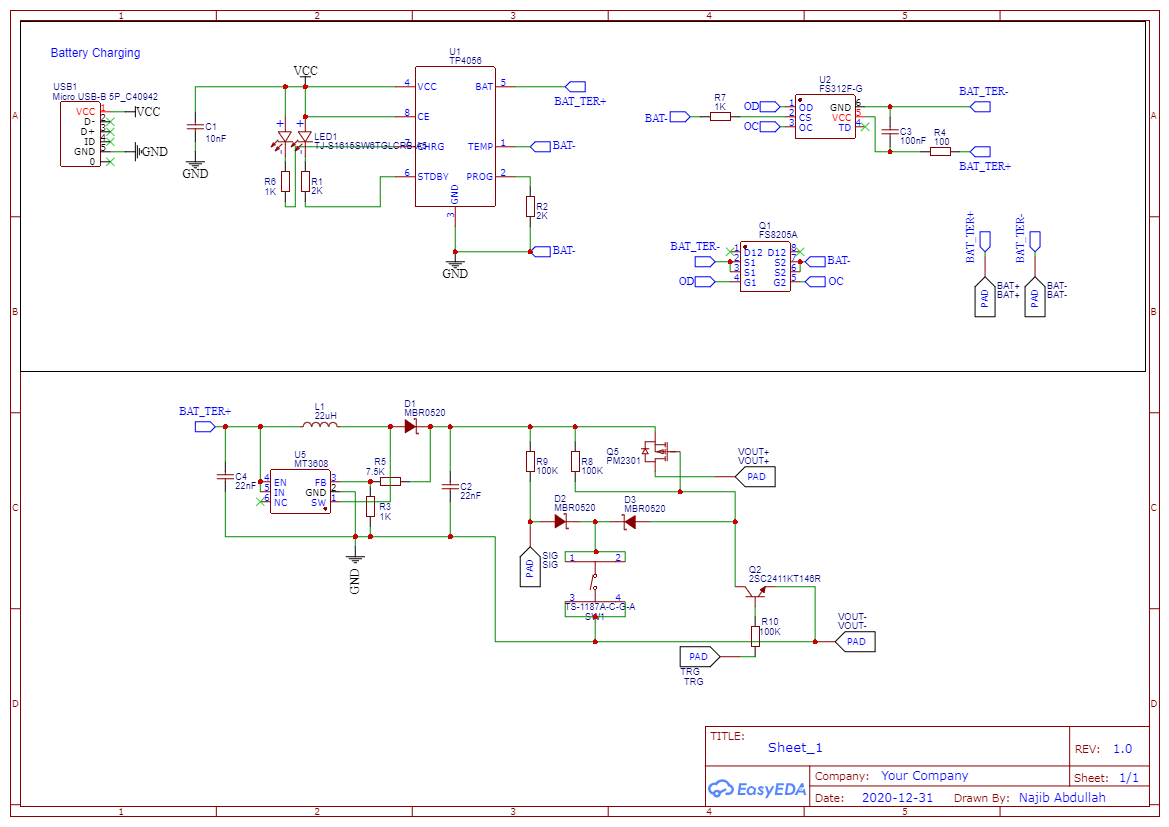Hi all,
I am designing a module that contains a li-ion charging module, battery protection, voltage booster, and latch switch. I have designed and fabricate the module but it seems not stable. Can anyone suggest what did I do wrong in my design? and how to improve it. I'm suspecting the latch parts has the issue as I ground it from Bat-. 
Chrome
88.0.4324.150
Windows
10
EasyEDA
6.4.14

